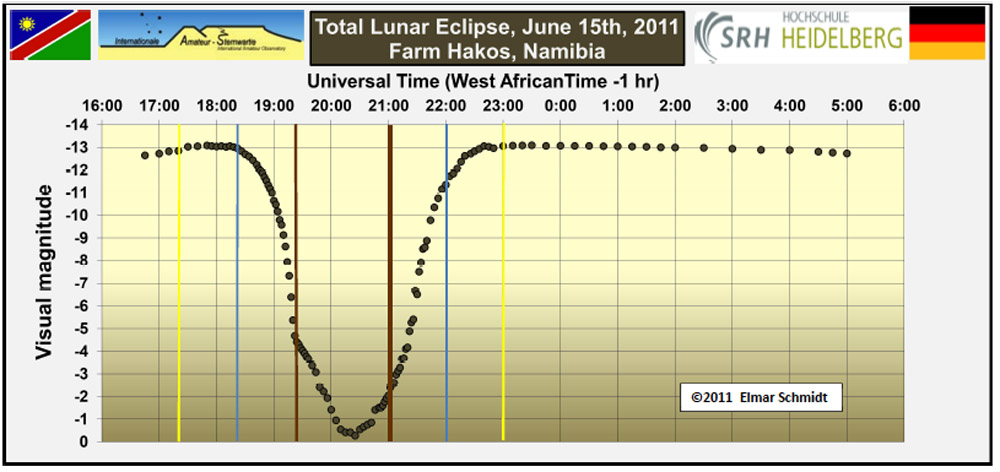January 4, 2021
How Dark Was It?
Originally published June 17, 2011

image by Elmar Schmidt
The June 15th, 2011 total lunar eclipse was followed photometrically from a mountain site in Namibia (16°21’47" E, 23°14’06" S, altitude 1834 m). All plotted magnitudes are standardized to an air mass of 1.0 of a Rayleigh atmosphere, which cannot correct for aerosol at low lunar altitudes during the first hour. This eclipse was "central", because the Moon travelled through the center of the umbra. This led to its comparative darknes, with the light curve bottoming out at a magnitude of -0.35 mvis, implying a linear brightness reduction in excess of 120 000. The colored vertical lines designate the six eclipse contact times. The light curve’s asymmetry compared to the geometrical phases is probably due to a combination of lunar topography and potential anomalies in the Earth’s shadow, which will be further analyzed and published.
Elmar Schmidt
Technical Details
This work is part of ongoing research at SRH University of Applied Sciences in Heidelberg, Germany. It was supported by useful information on the Farm Hakos from Internationale Amateursternwarte, for which the author wishes to thank KarlLudwig Bath and Dr. Carsten Jacobs. The assistance and hospitality of Waltraut Eppelmann, Friedhelm Hund, and their team at Farm Hakos is gratefully acknowledged.
Related Links
Similar data for the Dec 21, 2010 eclipse
Yesterday's LPOD: The Red Spaceship
Tomorrow's LPOD: Reading the Colors
COMMENTS?
Register, Log in, and join in the comments.



